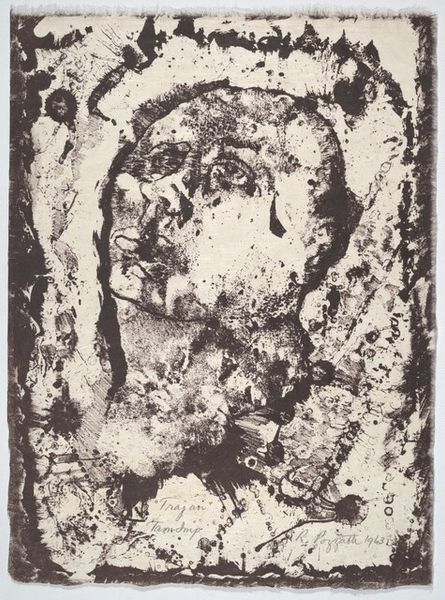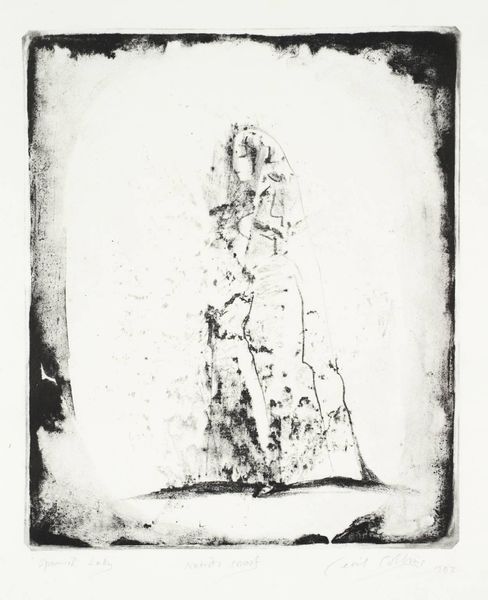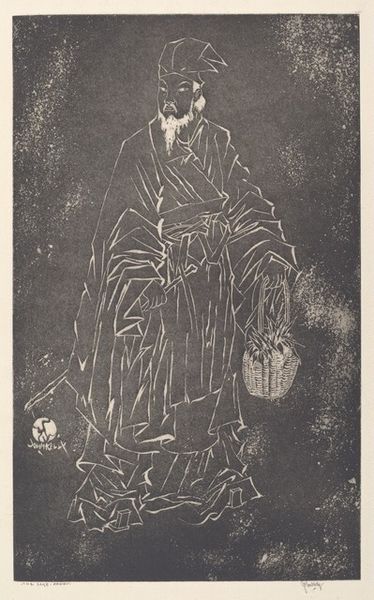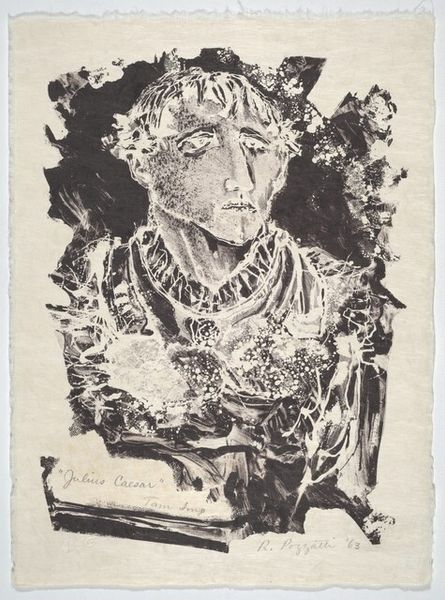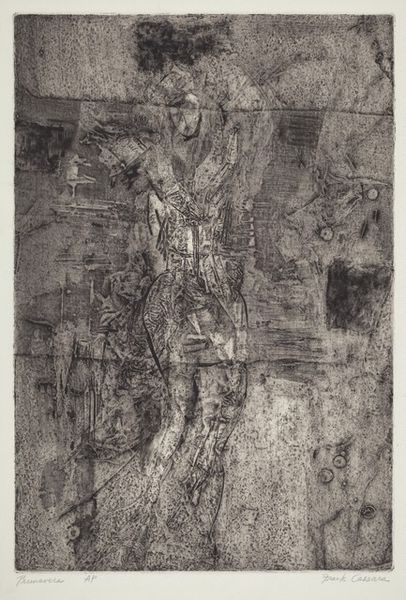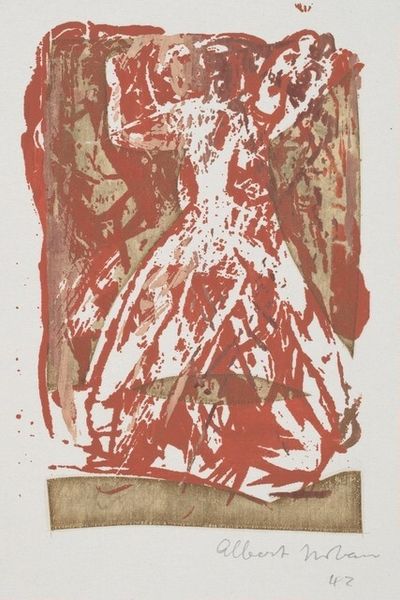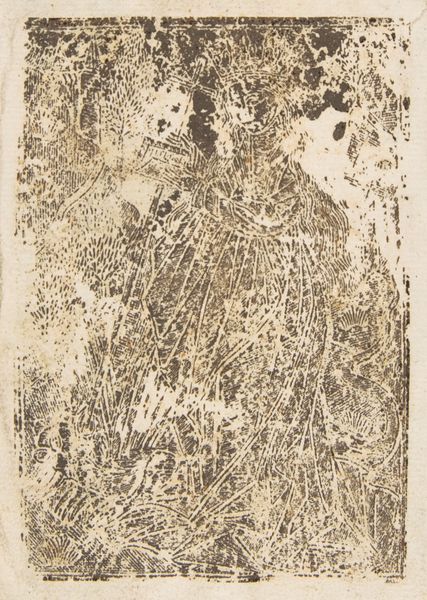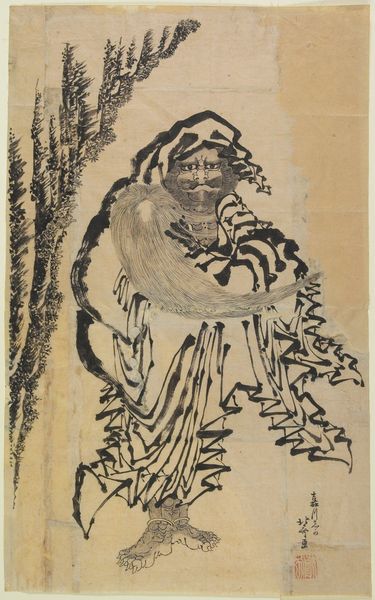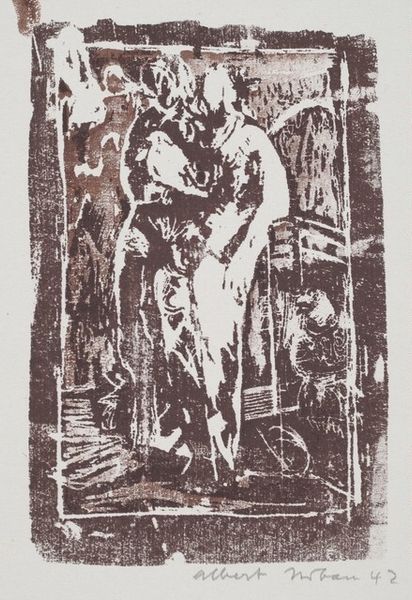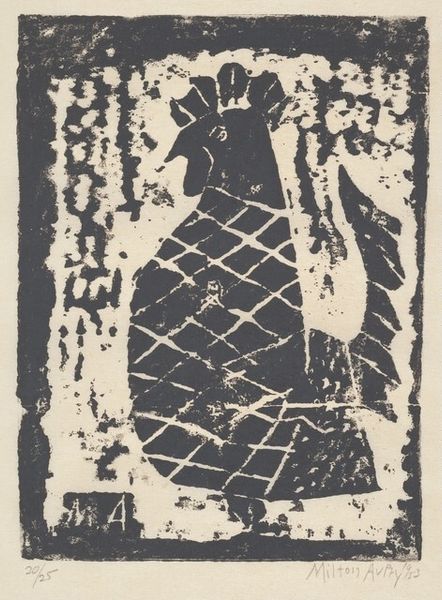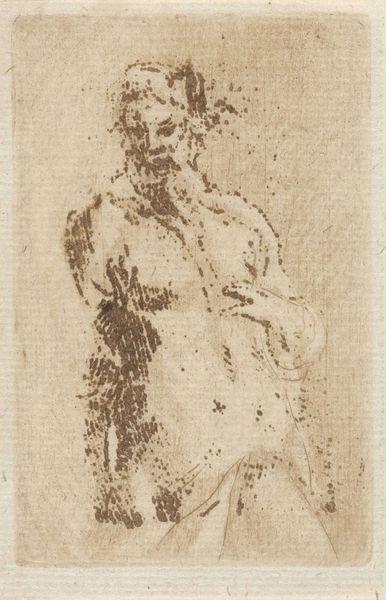
print, gestural-painting, ink
#
portrait
#
abstract-expressionism
#
ink drawing
# print
#
figuration
#
gestural-painting
#
ink
#
abstraction
Copyright: National Gallery of Art: CC0 1.0
Editor: This is Rudy Pozzatti’s "Titus," a print from 1963. It's a powerful, abstract figure rendered in black ink. The stark contrast is intense. What do you see in this piece? Curator: I see a commentary on the fracturing of identity within systems of power. The title, "Titus," likely alludes to the Roman emperor, yet the portrait is anything but traditional. The abstract-expressionist style, the gestural strokes and splatters, break down the figure. It begs the question: how do we reconcile historical representations of authority with the messy realities of human experience, especially in the face of abstract modernism? Editor: So, the abstraction isn't just about style, but about deconstructing the idea of Titus himself? Curator: Precisely. Think about the sociopolitical climate of 1963. America was grappling with its own identity, with civil rights struggles intensifying and anxieties about power structures rising to the fore. This artwork reflects that uncertainty. Pozzatti challenges the stability of historical narratives. What does it mean to memorialize a figure like Titus during a time of intense social upheaval? Editor: I see it. The fragmentation feels very deliberate now, less like a stylistic choice and more like a dismantling of a figurehead. Curator: Exactly. It is this dialogue between art history and contemporary theory that gives the print its resonance. Who gets remembered? How are they remembered? And what does that say about us, the ones doing the remembering? The visual language performs and enhances that discourse. Editor: I hadn't considered the specific historical context so directly. Thanks. Curator: It's essential to consider these dynamics, not just for historical artworks, but for how we understand identity and representation in our present moment. The print is like a fractured mirror, reflecting the complexities of power.
Comments
No comments
Be the first to comment and join the conversation on the ultimate creative platform.
